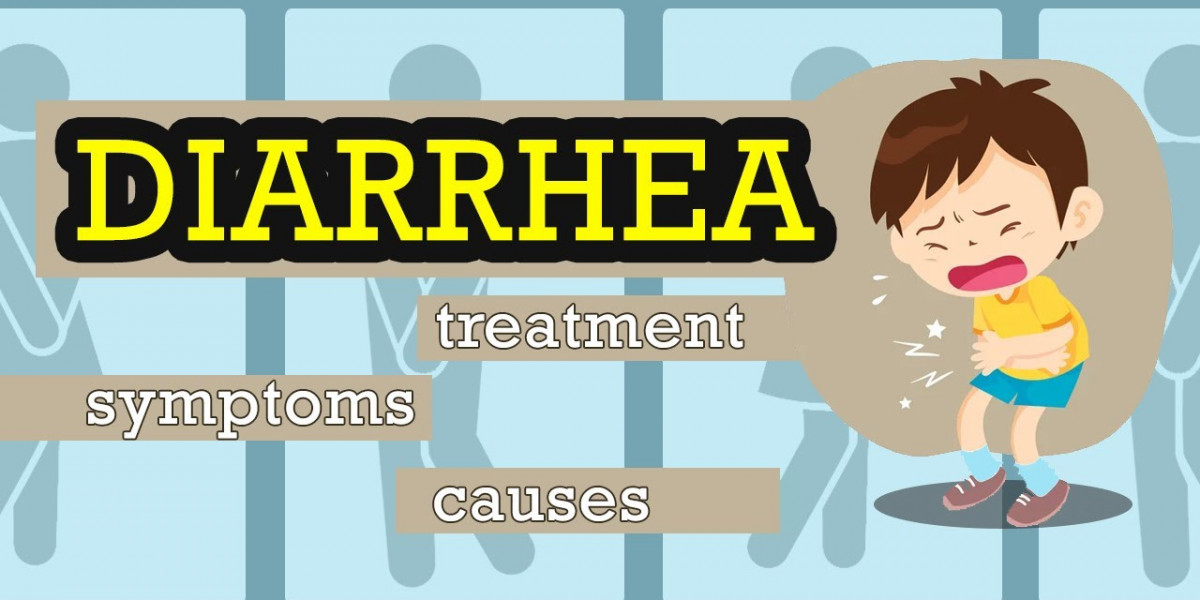Diarrhea is one of the most common ailments worldwide, causing substantial fluid and electrolyte loss in the body. When stools are loose and frequent, the digestive tract cannot reabsorb enough water and salts, leading to dehydration. In many settings especially where access to clean water, medical care, or rehydration solutions is limited dehydration from diarrhea is a leading cause of morbidity and mortality.
The World Health Organization (WHO) states that the most severe threat posed by diarrhoeal disease is dehydration: as water and electrolytes (sodium, chloride, potassium, bicarbonate) are lost in stool and vomit, the body’s fluid balance is disrupted.
How Dehydration Happens
Under normal conditions, the intestines absorb water and electrolytes back into the bloodstream. In diarrhea, that absorption is overwhelmed or bypassed, so fluid is lost faster than it can be replaced.
If the fluid loss continues and you do not replenish with fluids and salts, the following cascade can occur:
Blood volume (plasma) decreases → reduced perfusion (blood flow) to vital organs
Electrolyte imbalances (especially sodium, potassium) → cellular dysfunction
Decreased kidney filtration → risk of acute kidney injury
Hypovolemic shock (when blood pressure drops dangerously)
Organ failure, confusion, seizures, coma in extreme cases
Severe dehydration is life-threatening if not corrected.
Who Is at Highest Risk
Some population groups are particularly vulnerable:
Young children and infants they lose fluid more quickly and cannot always signal thirst or drink adequately.
Older adults reduced body water reserve, diminished thirst sensation, kidney function decline.
People with chronic illnesses (diabetes, kidney disease, heart disease)
Settings with limited access to clean water or supplies of oral rehydration solution (ORS)
Severe or prolonged diarrhea (persistent, >2-4 days)
Signs and Symptoms of Dehydration
Recognizing dehydration early is crucial. Signs may range from mild to severe depending on fluid loss.
Mild to Moderate Dehydration
Thirst or dry mouth
Reduced urine output, dark yellow urine
Dizziness or lightheadedness
Weakness, fatigue
Headache
Muscle cramps
Dry skin, loss of skin turgor (skin doesn’t bounce back quickly)
Sunken eyes
Severe Dehydration
Very little or no urination (or no wet diapers in infants)
Very dark or amber urine
Confusion, irritability, lethargy
Rapid heart rate, low blood pressure
Rapid breathing
Sunken fontanelle (in infants)
Shock, seizures, unconsciousness
If someone has signs of severe dehydration, immediate medical care is required.
Easy Fixes and Practical Measures
Even though dehydration from diarrhea can be serious, many cases (mild to moderate) can be managed at home with timely rehydration and self-care. Below are practical steps you can take, plus guidance on when to escalate care.
1. Use Oral Rehydration Solutions (ORS) First Line
Oral rehydration therapy (ORT) is the cornerstone for treating dehydration from diarrhea. The idea is to provide water plus an optimal balance of salts and glucose (sodium, potassium) to facilitate absorption.
Commercial ORS packets are typically available in pharmacies and are preferred.
If commercial ORS is not available, you can make a homemade solution: WHO’s formula is 1 liter of clean water + 3 grams (≈ ½ teaspoon) salt + 18 grams (≈ 6 teaspoons) sugar. (Some adaptations use lower salt)
Administer ORS in small, frequent sips e.g. 5-10 mL every few minutes, gradually increasing.
Continue ORS until diarrhea subsides and signs of dehydration improve.
ORS is very effective and can reduce mortality from diarrhea by up to 90 % in children when used properly.
2. Increase Fluids Wisely
In addition to ORS, other liquids can help, but with caution:
Plain water good for mild losses, but not sufficient alone in moderate or severe dehydration
Coconut water provides potassium, magnesium, and some fluid
Clear broths / soups with a little salt
Diluted fruit juices (not overly sweet)
Weak tea (unsweetened)
Avoid high-sugar sodas, undiluted fruit juices, caffeinated beverages they may worsen diarrhea.
3. Continue Light Feeding
Once the person tolerates fluids, start light, easily digestible meals (e.g. rice, toast, bananas, yogurt). This helps preserve energy and supports recovery.
Avoid heavy fats, spicy food, or dairy (if intolerant temporarily) until recovery.
4. Zinc Supplementation (for Children in Some Settings)
WHO recommends zinc (10–20 mg daily for 10–14 days) in children with diarrhea to shorten the episode and reduce recurrence.
5. Monitor and Seek Medical Help If Needed
If the following occur, prompt medical evaluation is necessary:
Signs of severe dehydration
Persistent diarrhea > 2–3 days in adults, >24 h in infants
Blood in stool
High fever
Severe abdominal pain
Lethargy or confusion
No improvement with rehydration
Inability to drink or keep fluids down
Medical care may involve intravenous (IV) fluids, electrolyte management, and addressing underlying causes (infection, etc.).
Why Dehydration from Diarrhea Is Especially Dangerous
Organ Stress and Injury
Continued fluid depletion stresses the cardiovascular system. The kidneys may suffer due to reduced perfusion, risking acute kidney injury (AKI). Electrolyte disturbances (especially potassium, sodium) can cause arrhythmias or neuromuscular disturbance.
Shock and Circulatory Collapse
If fluid loss is massive and untreated, circulatory collapse (hypovolemic shock) can occur. Organs like the brain, heart, and liver are deprived of adequate blood flow, potentially leading to multi-organ failure.
Nutritional Consequences
Repeated bouts of diarrhea and dehydration contribute to malnutrition, especially in children, perpetuating a vicious cycle of poor immunity and recurrent illness.
Increased Mortality Risk
In low-resource settings, dehydration from diarrhea is a leading cause of death, especially in children under 5 years of age.
Contextual Note: Cephalexin Capsules Distributors and Paradoxical Use
Since you requested the keyword “cephalexin capsules distributors,” here is how it ties in (especially in pharmaceutical or public health contexts):
Cephalexin is a first-generation cephalosporin antibiotic commonly used to treat bacterial infections such as skin infections, ear infections, urinary tract infections, etc.
In some cases, diarrhea may accompany or follow antibiotic therapy (antibiotic-associated diarrhea). Overuse or misuse of antibiotics (including cephalexin) can disrupt gut flora and worsen diarrhea.
Pharmaceutical companies, wholesalers, and cephalexin capsules distributors must ensure quality control, batch tracking, and correct labeling, particularly when supplying antibiotics in regions with high infectious disease burden.
In areas where diarrheal disease is common, antibiotic distributors may also supply ORS, zinc supplements, and promote integrated approaches rather than antibiotics alone.
Thus, when writing educational or promotional materials for a pharmaceutical distribution network (e.g. cephalexin capsules distributors), it is prudent to stress the importance of also distributing rehydration solutions, educating about dehydration, and discouraging indiscriminate antibiotic use for diarrheal illnesses (many of which are viral).








